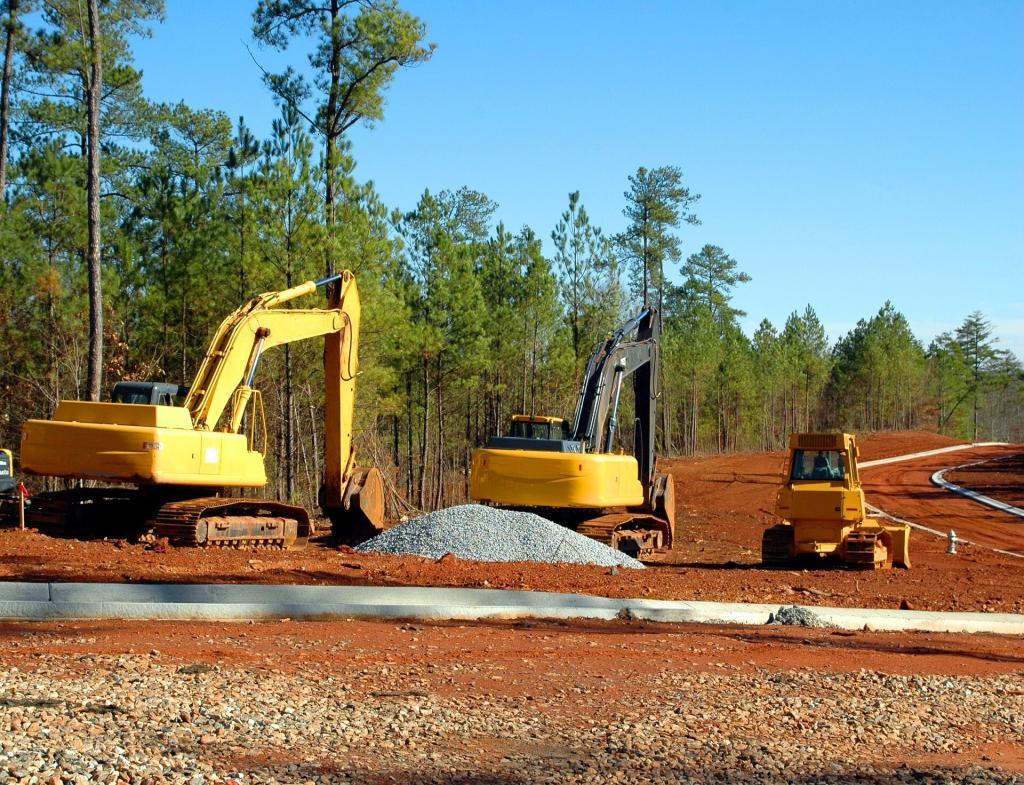
Excavator and pile of backfill to be compacted.
Backfill compaction is a crucial process used in construction and civil engineering to enhance the soil density, stability, and load-bearing capacity around underground utilities. It involves the compaction of the backfill material placed around these utilities, such as pipes, conduits, and cables, to reduce settlement and minimize potential damage.
When underground utilities are installed, the excavated trench is typically filled with backfill material to support and protect the utilities. The backfill material can consist of various types, including soil, crushed stone, gravel, or engineered fill materials, depending on the specific project requirements.
The main objectives of backfill compaction are:
- Soil Density: By compacting the backfill material, the soil particles are closely packed together, increasing the soil density. Higher soil density improves the overall stability and load-bearing capacity of the backfill, reducing the risk of settlement.
- Stability: Compacted backfill provides enhanced stability to underground utilities, preventing excessive movement or shifting. This is particularly important for utilities that require precise alignment and protection from external forces.
- Load-Bearing Capacity: Compaction significantly increases the load-bearing capacity of the backfill material. It enables the backfill to withstand the imposed loads from traffic, structures, or other forces, without excessive deformation or settlement.
- Settlement Reduction: Proper compaction minimizes settlement, which is the downward movement of the ground surface over time. Settlement can lead to uneven surfaces, structural damage, and functional issues with the utilities. Compaction helps to limit settlement by reducing voids and increasing soil density.

Loading backfill for compaction in underground utilities.
The process of backfill compaction typically involves the following steps:
- Preparation: The trench or excavation is prepared by ensuring proper alignment, placement of any required geotextiles, and removal of any debris or loose material.
- Placing Backfill Material: The backfill material is placed in layers within the trench, with each layer compacted individually. The layer thickness is usually limited to a certain depth to facilitate effective compaction.
- Compaction: Various compaction techniques are employed to achieve the desired soil density. Common compaction methods include vibratory plate compactors, vibratory rollers, pneumatic tampers, and compacting with the bucket of an excavator or backhoe. The choice of equipment depends on factors such as the type of backfill material, site conditions, and the depth and width of the trench.
- Moisture Control: Proper moisture content is crucial for effective compaction. The backfill material should have optimal moisture content to achieve maximum compaction density. Excessive moisture can result in reduced compaction, while inadequate moisture can lead to poor particle bonding.
- Testing: Compaction testing is often performed during the process to assess the achieved density. Various tests, such as the Proctor test or the sand cone test, may be conducted to determine the compaction characteristics and ensure compliance with project specifications.
By implementing proper backfill compaction techniques, the soil surrounding underground utilities can be adequately reinforced, enhancing their longevity, minimizing settlement, and reducing the potential for damage or failure. It is an essential step in the construction and maintenance of underground infrastructure.

Trench Safety Equipment: Trench Boxes Manhole Boxes, Bedding Boxes, Road Plates

